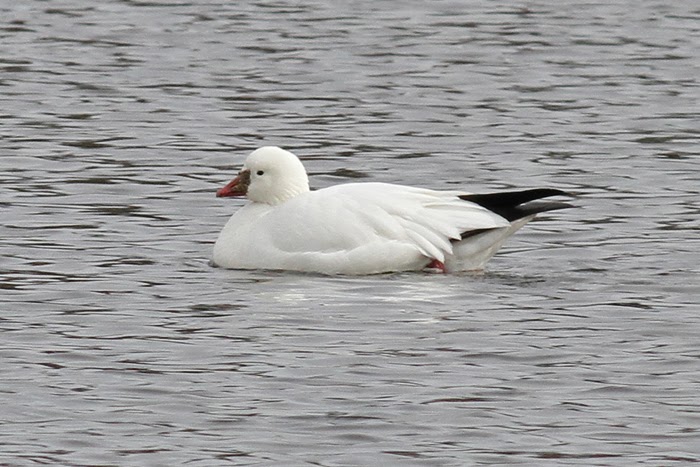The Painted Bunting seems to have abandoned the Northwood Center of late and gone back to feeders closer to the beachfront, being seen on Lincoln and Harvard Avenues over the last couple of days. I gather from Glen Davis that the Black-capped Chickadee is still lurking in the back streets of Cape May Point, while the male Snowy Owl continues to be reported from Beach Avenue in Cape May. Perhaps shock of the day today was news from Tom Reed that the Smith's Longspur is still feeding happily in the dunes at Stone Harbor Point! Not a huge surprise perhaps, but it does show that, no matter what the weather, seek and you shall find!
Back to Lake Lily though and some food for thought, inspired by Tom Reed's doggedness to re-find the longspur. If you want to put something more into your birding, consider picking a local spot and try to schedule regular visits to it over a longer period of time. By trying to standardize your effort (same time of day, duration of visit etc) and keeping records of your finds (via eBird of course!), it is amazing what information you can put together on bird movements through a single site. Lake Lily offers great potential for this due to its location and even watching it day in day out, it is amazing just what I have noticed there. Turnover of birds can be quite rapid, especially now with waterfowl on the move and starting to head north and I am sure we shall be seeing more interesting birds there in the coming days.
Staring out over a bewildering medley of waterfowl, it can sometimes seem a daunting task trying to find the one that looks just that little bit different. Here's the view that faced me upon my arrival at work last Saturday morning. So which one is the interesting one? Well, think about vertical versus horizontal lines... [photo by Mike Crewe]
Cropping the same picture and zooming in to the middle, notice the Green-winged Teal with the stripe that's going the wrong way... [photo by Mike Crewe]
Waking the ducks up and pulling them out into the open gives us a better fighting chance. Now the difference is easier to see - one of these ducks is not like the other ones! The middle bird is a Common or Eurasian Teal and a nice bird to find at Cape May. This is a bird to watch since, though only considered a race of Green-winged Teal in North America, taxonomic committees in other parts of the world now recognize this taxon as a full species and a worthy tick for your list [photo by Mike Crewe].
A final look at the Eurasian Teal, here at the final part of its crazy courtship display. As well as the distinctive white stripe formed by edges of the longest scapulars, note also that Eurasian Teal has more extensive and more obvious cream piping bordering the green face patch, so even a head view amongst the crowd could be enough to pick one out [photo by Mike Crewe].
Though not a good identification shot, this photo of today's Ross's Goose shows just how small these birds are compared with the local Canada Geese [photo by Mike Crewe].
Full on Ross's Goose - note the small headed, small billed appearance without the black 'grin' line found on the bill of Snow Goose and with a bluish tint to the base of the bill. Ross's Goose is a rare bird on the East Coast, its main wintering grounds being in the south-western states and along the Texas coast. But they do turn up here from time to time so are worth keeping an eye open for - of course, finding one in a flock of five thousand Snow Geese is going to be a little harder than this! [Photo by Mike Crewe]
While you are near the water, do keep an eye out for other surprises. On a short trip with my volunteer naturalists to Mott's Creek in Atlantic County last Saturday evening, I was very pleased to find this American Mink swimming down the creek and providing great photo opportunities of a species that is normally very difficult to approach [photo by Mike Crewe].






